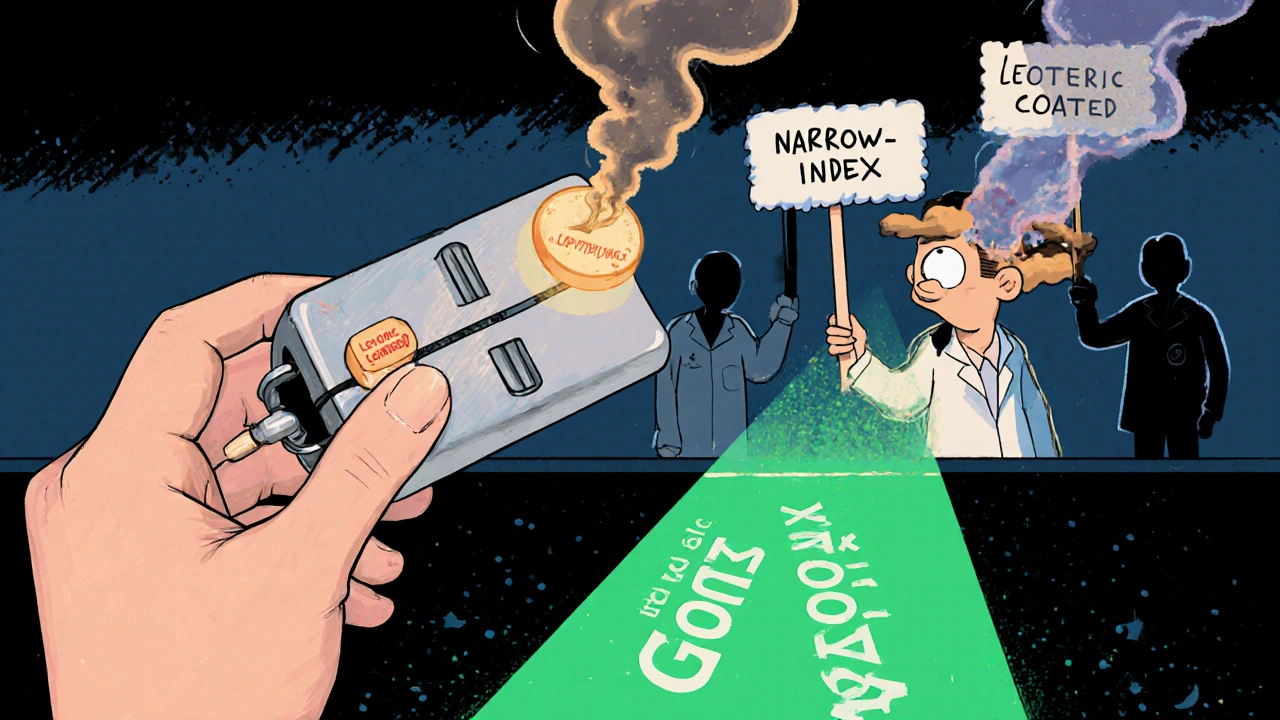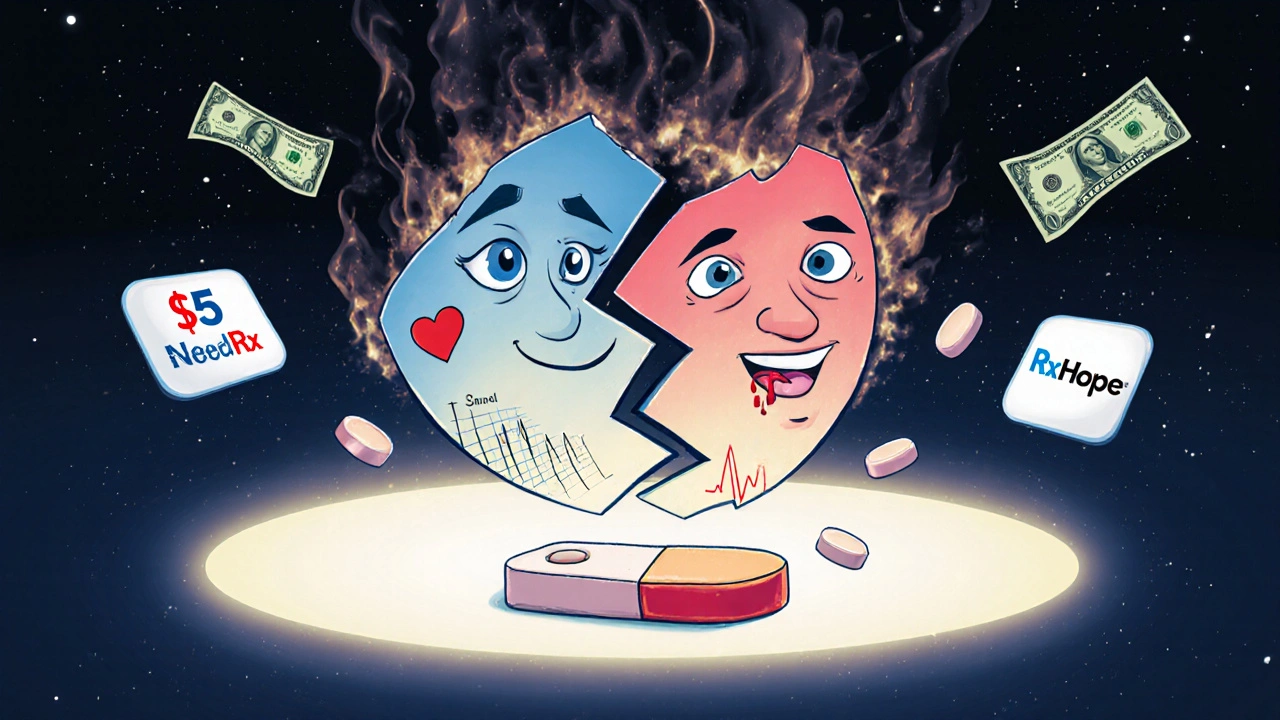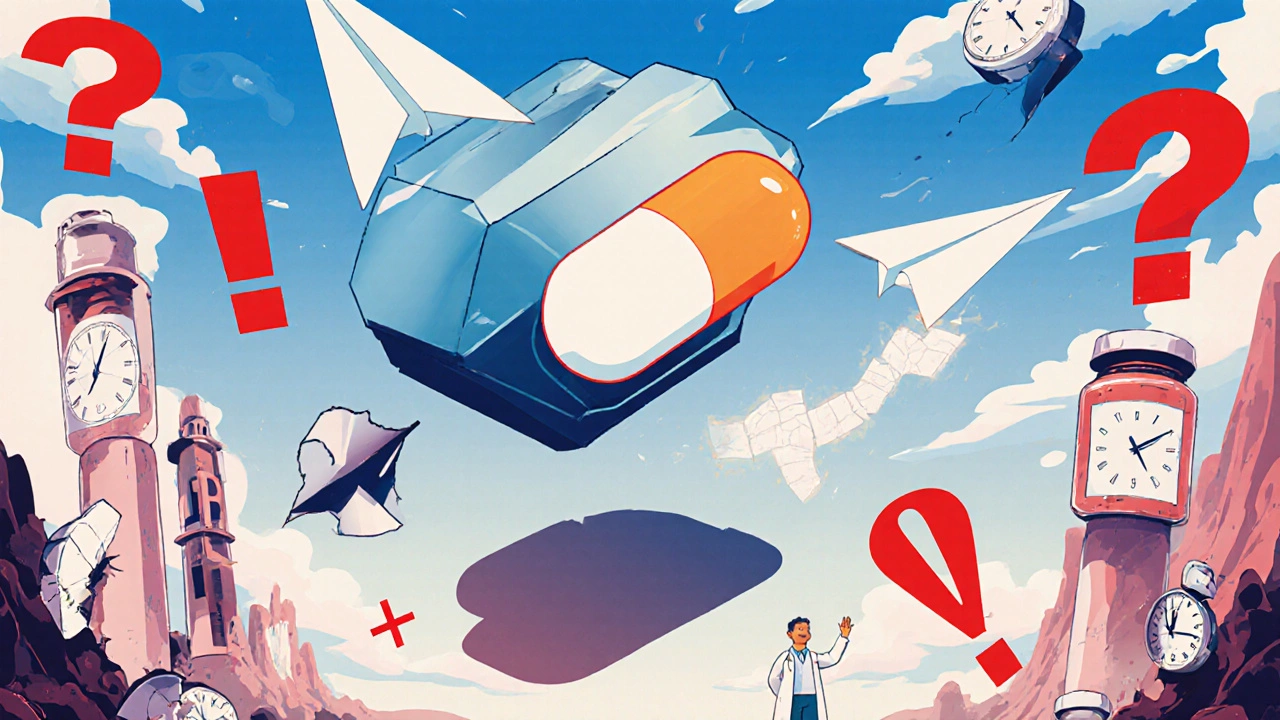Medication costs are rising, and for many people, paying for prescriptions feels like a monthly burden. If you’re taking a higher-dose pill and your doctor prescribed half that amount, you might be wondering: Can I split the pill to save money? The answer isn’t a simple yes or no. It depends on the drug, how you split it, and whether you’ve talked to your doctor. But when done right-with the right tools and knowledge-pill splitting can cut your prescription costs by up to 50%.
Why Pill Splitting Saves Money
Pharmaceutical companies often price pills based on the total cost of production, not the amount of active ingredient. That means a 40mg tablet might cost only slightly more than a 20mg tablet, even though it contains twice the medicine. Splitting the 40mg tablet into two 20mg doses gives you two doses for the price of one. For example, a 40mg atorvastatin tablet costs around $4.27, while two 20mg tablets cost $3.48 each-totaling $6.96. Splitting saves you nearly $2.70 per week, or over $140 a year. That adds up fast if you’re on multiple medications.Medicare Part D beneficiaries who split pills save an average of 25-50% on their monthly drug bills, according to a 2022 Kaiser Family Foundation report. The practice is most common among seniors and people on fixed incomes. In fact, nearly 1 in 7 Medicare users split their pills to stretch their budget.
Not All Pills Can Be Split
This is the most critical point: Not every pill is safe to split. Some medications are designed to release slowly over time, protect the stomach, or maintain exact blood levels. Splitting these can be dangerous.Here are the types of pills you should NEVER split:
- Extended-release (ER) or sustained-release pills - like metformin ER, oxycodone ER, or amlodipine ER. Splitting these can cause the entire dose to release at once, leading to overdose.
- Time-release capsules - such as Adderall XR or Concerta. These have special coatings that control absorption. Breaking them ruins the mechanism.
- Enteric-coated tablets - like omeprazole or aspirin EC. The coating prevents stomach irritation. Splitting exposes the drug to your stomach, causing pain or reducing effectiveness.
- Narrow therapeutic index drugs - where even a 5-10% dose change can cause harm. Examples include warfarin (blood thinner), digoxin (heart medication), levothyroxine (thyroid hormone), and tacrolimus (transplant drug). A small error can lead to stroke, heart rhythm problems, or organ rejection.
- Capsules, liquids, or powders - these aren’t meant to be split at all.
Always check the package insert. If it doesn’t say the pill can be split, assume it can’t. The FDA says you should only split tablets that are explicitly approved for splitting. And don’t rely on the score line - just because there’s a line down the middle doesn’t mean it’s safe to split.
How to Split Pills Safely
If your doctor and pharmacist say your pill is safe to split, here’s how to do it right:- Use a pill splitter - not a knife, scissors, or your fingers. A dedicated pill splitter has a V-shaped holder and a retractable blade. They cost $3-$10 at pharmacies like Walgreens, CVS, or Walmart. They’re designed to give you even halves.
- Split one pill at a time - don’t split a whole bottle in advance. Once split, the exposed surface is vulnerable to moisture, heat, and air. Medications like levothyroxine or nitroglycerin can lose potency within 24-48 hours if not stored properly.
- Split right before taking - this keeps the medication stable. Store the unsplit pills in a cool, dry place. Keep split halves in a small, sealed container if you must store them for less than a day.
- Check for crumbling - if the pill breaks unevenly or crumbles, throw it away. Don’t try to salvage half a dose. Use a new pill and try again.
- Wash your hands and the splitter - after each use. Residue from one pill can contaminate another, especially if you’re splitting different medications.
A 2007 study in the Journal of the American Pharmacists Association found that using a pill splitter resulted in dose accuracy within 5-15% variation. Knife-splitting? That jumped to 25-72% error. That’s not just inaccurate - it’s risky.

What to Do Before You Start
Before you buy a pill splitter or crack open your prescription bottle, talk to your healthcare provider. Ask these questions:- Is this medication approved for splitting?
- Is there a lower-strength version available?
- Could I use a patient assistance program instead?
- Are there generic or discount options?
Many drug manufacturers offer savings cards or copay assistance. Programs like GoodRx, NeedyMeds, or RxHope can reduce costs by 30-50% without the risks of splitting. Some pharmacies also offer $4 generic lists for common medications like lisinopril, metoprolol, or simvastatin.
One Reddit user, 'MedSaver87', saved $287 a month by splitting 40mg simvastatin tablets with a $5 pill splitter. But another user, 'AnxiousPatient22', ended up in the hospital after splitting a time-release amlodipine pill. The difference? One followed guidelines. The other didn’t.
When Pill Splitting Doesn’t Save Money
Sometimes, splitting doesn’t save you anything - or even costs more. For example:- 100mg sertraline tablets cost $0.12 each, while 50mg tablets cost $0.08 each. Buying two 50mg tablets is cheaper than splitting one 100mg tablet.
- Some insurers won’t cover split tablets if the lower dose is available, forcing you to pay full price for the higher-dose pill anyway.
- For medications like levothyroxine, even a 5% dose change can cause symptoms like fatigue, weight gain, or heart palpitations. The cost savings aren’t worth the risk.
Always compare the total cost per milligram. If a 20mg tablet costs $2.00 and a 40mg tablet costs $3.00, splitting saves you money. But if the 40mg costs $4.00 and two 20mg tablets cost $3.50, you’re better off buying the lower doses.
Real Risks, Real Stories
The Institute for Safe Medication Practices studied 94 people splitting 25mg hydrochlorothiazide tablets. 41% of the halves were off by more than 10%. 12% were off by over 20%. That’s not a small mistake - that’s a dangerous one.Patients who split pills without professional guidance are twice as likely to experience reduced effectiveness or side effects, according to PharmacyTimes.com’s 2022 survey. One woman split her Synthroid tablet and ended up with a TSH level so high she needed emergency blood work. Another man split his warfarin pill and nearly bled internally.
The FDA has documented 127 adverse events linked to improper pill splitting between 2018 and 2023. Most involved thyroid, heart, or blood-thinning drugs. These aren’t rare accidents - they’re preventable.

Alternatives to Pill Splitting
Before you split a pill, explore safer options:- Ask for generics - they’re often 80% cheaper than brand names.
- Use pharmacy discount cards - GoodRx, SingleCare, and RxSaver can cut prices by 30-70%.
- Apply for patient assistance programs - drugmakers like Pfizer, Merck, and AbbVie offer free or low-cost meds to qualifying patients.
- Ask about therapeutic alternatives - sometimes a different drug in the same class costs less and doesn’t require splitting.
- Buy in bulk - some pharmacies offer 90-day supplies at lower per-pill rates.
These options carry zero risk of dose inaccuracy. And they’re often easier than trying to split pills consistently.
Final Advice
Pill splitting isn’t inherently bad. It’s a practical solution for people who can’t afford their meds. But it’s not a shortcut. It’s a responsibility.If you’re considering it:
- Never split without your doctor’s approval.
- Never split anything that’s extended-release, enteric-coated, or has a narrow therapeutic window.
- Always use a proper pill splitter.
- Split one pill at a time, right before you take it.
- Discard any crumbled or uneven halves.
- Track your symptoms - if you feel different after splitting, talk to your pharmacist.
Medication costs are a real problem. But safety should never be traded for savings. There are better ways to cut costs - and they don’t involve risking your health.
Can I split any pill with a score line?
No. A score line only means the pill was designed to be split - not that it’s safe to split. Always check the package insert or ask your pharmacist. Some scored pills, like extended-release tablets, still shouldn’t be split.
Is it safe to split pills in advance?
No. Once a pill is split, the exposed surface can degrade due to moisture, heat, or air. Medications like levothyroxine, nitroglycerin, or certain antibiotics lose potency within 24-48 hours. Always split right before taking.
What’s the best pill splitter to buy?
Look for a simple, sturdy pill splitter with a V-shaped holder and a retractable blade. Brands like Medisafe, Easy Split, or the ones sold at CVS and Walgreens for $3-$10 work well. Avoid cheap plastic models that bend or don’t hold the pill securely.
Can I split capsules or liquid pills?
Never. Capsules, time-release beads, liquid suspensions, and powders are not meant to be split. Opening or crushing them can destroy the drug’s delivery system and cause dangerous side effects.
What if I accidentally split a pill that shouldn’t be split?
Stop taking it immediately. Contact your pharmacist or doctor. If it’s a high-risk medication like warfarin, digoxin, or levothyroxine, seek medical advice right away. You may need blood tests to check your levels.
Are there any medications that are especially risky to split?
Yes. Avoid splitting any medication with a narrow therapeutic index: warfarin, digoxin, levothyroxine, lithium, phenytoin, tacrolimus, and cyclosporine. Even a 5% dose change can cause serious harm. Also avoid extended-release, enteric-coated, or time-release formulations.
Does Medicare cover split pills?
Yes. Medicare Part D plans cannot deny coverage for split pills if the original prescription was for a higher dose. However, your plan may require you to use the lower-dose version if it’s available and cheaper.
What to Do Next
If you’re thinking about splitting pills to save money, start here:- Write down every medication you take and the dose.
- Check the package insert for each one - look for the words “can be split” or “not for splitting.”
- Call your pharmacist and ask: “Is this safe to split?”
- Ask if there’s a lower-strength generic or a discount program available.
- If splitting is approved, buy a $5 pill splitter and start with one pill at a time.
Medication costs are stressful. But your health is worth more than a few dollars saved. Do it right - or don’t do it at all.


Comments (9)
Steve Harris
Been splitting my atorvastatin for three years now with a $6 pill splitter from Walmart. No issues, no side effects. My pharmacist approved it, and I check the dose every time with a magnifying glass. Saved me over $150 a year. Just don’t be lazy about it - use the right tool and don’t split anything with ER or enteric coating. Simple as that.
Mark Kahn
Love this post! Seriously, so many people just wing it with a knife and wonder why they feel weird. I used to split my metformin until my pharmacist showed me the extended-release coating. One look and I was like, ‘ohhhhh nope.’ Always ask before you snap!
Erika Sta. Maria
YOU THINK THIS IS SAFE?!?!? LOL. The FDA? Pfft. They’re owned by Big Pharma. You think they want you saving money? NO. They want you buying TWO pills when one would do. And that ‘pill splitter’? It’s a scam to sell you plastic. Real people in India split pills with nail clippers and live longer. Science is a lie. I split my warfarin with my teeth and my TSH is PERFECT. The system is rigged. #FreeMedication
Nikhil Purohit
Just wanted to add - if you’re on levothyroxine, don’t even think about splitting unless your endo specifically says it’s okay. I had a friend who did it and ended up with heart palpitations for weeks. Blood tests showed her TSH was off by 30%. That’s not a ‘small error’ - that’s a medical emergency waiting to happen. Always get a lab check after switching methods.
Debanjan Banerjee
There’s a fundamental flaw in the cost analysis here. The assumption that a 40mg tablet costs ‘only slightly more’ than a 20mg tablet ignores bulk manufacturing economics. In reality, many generics are priced per milligram, not per tablet. For example, lisinopril 10mg vs 20mg: the 20mg is exactly double the price. No savings. Always compare cost per mg - not per tablet. Also, insurance formularies often penalize splitting by denying coverage unless the lower dose is prescribed. This post is dangerously misleading without that context.
Michael Marrale
Wait… so you’re telling me the government doesn’t want us to save money? That’s why they don’t make 5mg versions of everything… they’re hiding the truth. I’ve been splitting my blood pressure meds for years. The pills have a line, right? That’s not a score - it’s a SECRET CODE. They put it there so we’d think it’s safe… but it’s actually a trap. I think the pharmaceutical companies are working with the FDA to keep us sick. I’ve been taking half pills since 2018 and I’ve never been healthier. Coincidence? I think not. 🤔
David vaughan
I split my simvastatin. Every. Single. Day. With. A. Pill. Splitter. I. Wash. It. After. Each. Use. I. Don’t. Split. In. Advance. I. Store. Halves. In. A. Sealed. Container. I. Check. The. Package. Insert. I. Talked. To. My. Pharmacist. I. Track. My. Symptoms. I. Have. Zero. Regrets. And. I. Saved. $210. This. Year.
Cooper Long
Pill splitting is a pragmatic response to systemic healthcare cost failures. It is neither inherently safe nor unsafe - its risk profile is contingent upon adherence to pharmacological guidelines. The burden of responsibility lies with the patient to consult professionals and verify pharmaceutical specifications. The practice, while economically rational, must be approached with clinical rigor.
Shawn Sakura
Y’all are overthinking this 😊 I split my metoprolol every morning with my little $4 splitter and I feel AMAZING. My doctor said it’s fine, my pharmacist said it’s fine, my dog even wags his tail when I open the pill box. Don’t let fear stop you from saving money - just do it right! And if you’re nervous? Get a lower dose. But hey - if you’re already splitting and feeling good? Keep doing it! 💪❤️